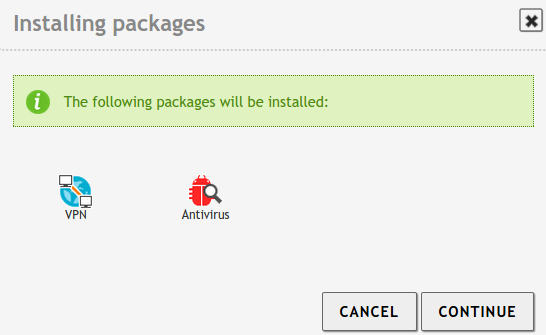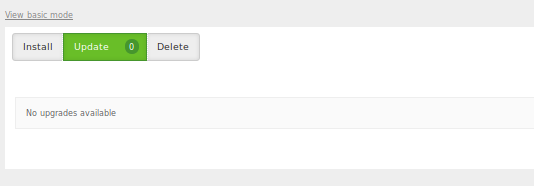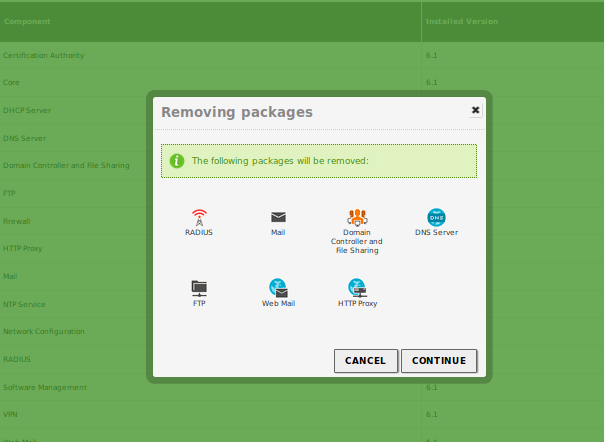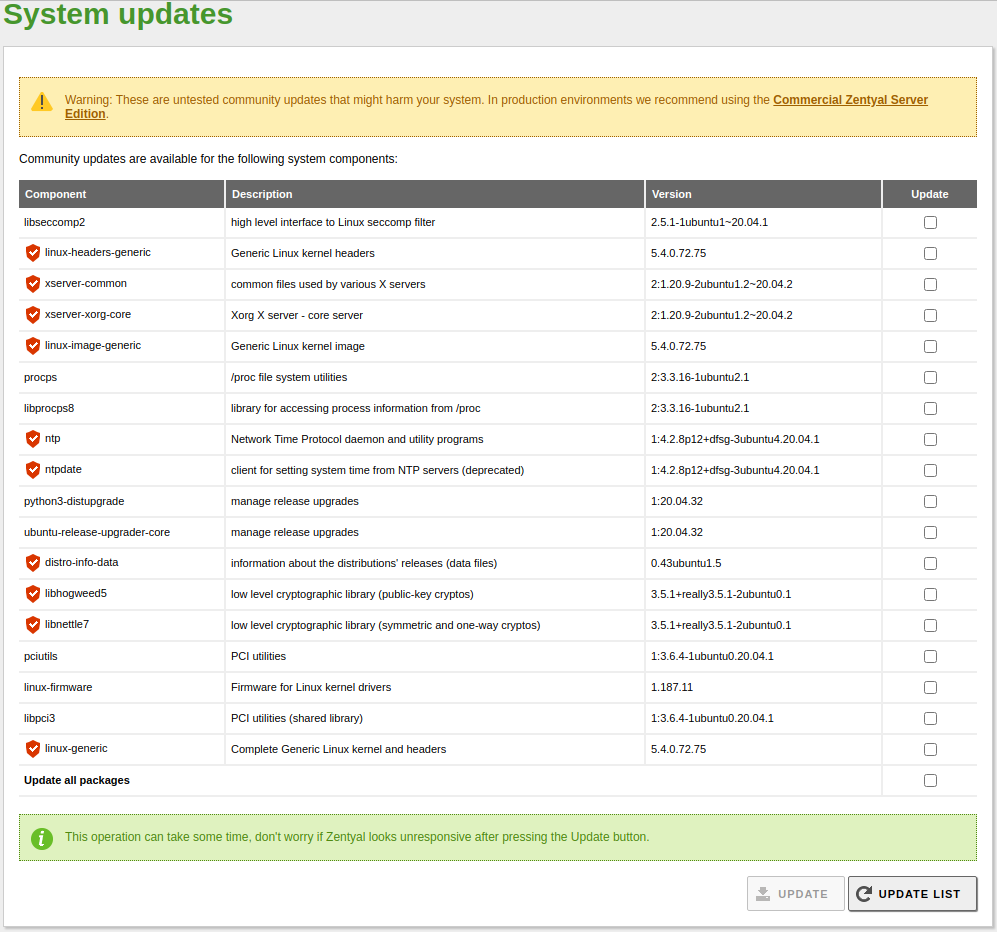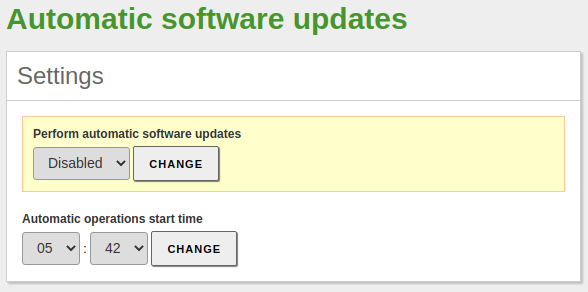Software updates¶
Software updates in Zentyal¶
Like any other software system, Zentyal server requires periodic updates either to add new features or to fix defects.
Zentyal distributes its software as packages and uses Ubuntu’s standard tool, APT [1]. However, in order to ease this task, a web interface is provided to simplify the process [2] .
The web interface helps you to see easily for which Zentyal components a new version is available and lets you to install them in a simple way. It also allows you to update the software supporting Zentyal, mainly to correct potential security flaws.
| [1] | Advanced Packaging Tool (APT) is a system for the management of software packages created by the Debian Project which greatly simplifies the installation and removal of programs on Linux http://wiki.debian.org/Apt |
| [2] | For a more extensive explanation on how to install software packages in Ubuntu, please read the chapter on package management in Ubuntu’s official documentation https://ubuntu.com/server/docs/package-management |
Management of Zentyal components¶
The management of Zentyal components allows you to install, update and delete Zentyal modules.
To manage Zentyal components, you must go to .
When you access this section from the menu, you will be shown the “advanced view”. This view has three tabs each one for the actions of Installing, Updating and Deleting Zentyal components.
On this view there is an option to change to basic mode that will display the packages and profiles just as you saw during installation time.
When you get back to the advanced view, you will see all the available actions in detail.
Component installation¶
This is the tab you will see when you go to the component management. There are three columns in this form: one for the component name, another for the version currently available in the repositories and a third to select the component. In the lower part of the table you can view the buttons to Install and Update list.
To install the required components, simply select them and click on the Install button. You will then be shown a complete list of the dependencies to be installed.
The Update list button synchronizes the list of packets with the repositories.
Component update¶
In the following tab, Update, you can see the number of available updates. Apart from this feature, this section is organized in a similar way to the installation view with only some minor differences.
An additional column indicates the version currently installed and in the bottom of the table you can see a button which can be clicked to update the selected packages. As with the installation of components, when you click on the Update button, you will see a confirmation screen showing the packages to be updated.
Component deletion¶
The last tab, Delete, shows a table with the installed packages and their versions. In a similar way as with the previous view, you can select packages to uninstall and then, to complete the action, click the Delete button in the lower left part of the table.
Before performing the action, just like in previous examples, Zentyal will ask for confirmation before deleting the selected packages and their dependencies.
System Updates¶
The system updates keep the third party software used by Zentyal up to date. To work properly, Zentyal server needs different system programs. These programs are referenced as dependencies. When you install Zentyal or any of the modules, also the necessary dependencies need to be installed to ensure the correct operation of the server. Some of these system programs might have their own dependencies too.
Usually, a dependency update is not important enough to force a complete update of a Zentyal package. However, it might be interesting to install if it offers significant improvements or patches that fix security flaws of previous version.
To see the system updates you must go to . Here you can see if your system is already updated. If not, a list of packages that can be updated is displayed. If you install packages on the server using other methods (compiling from the source, apt or dpkg) Zentyal package database will become outdated. Therefore, every night a process is executed to search for available updates for the system. A search can be forced by clicking on the button Update list on the lower part of the page.
Security updates are especially important and these are indicated with an icon. By clicking on the icon you can find details included in the package changelog regarding the security flaw.
If you want to perform an update, select the packages on which to perform the action and press the appropriate button. As a shortcut, the button Update all packages can be used. Status messages will be displayed during the update operation.
Automatic updates¶
Automatic updates allow Zentyal server to automatically install any available updates.
This feature can be enabled on the page .
On this page you can also choose the time of the day during which these updates will be performed.
It is not recommended to use this option if the administrator needs to keep a higher level of security and control for the management of updates.

